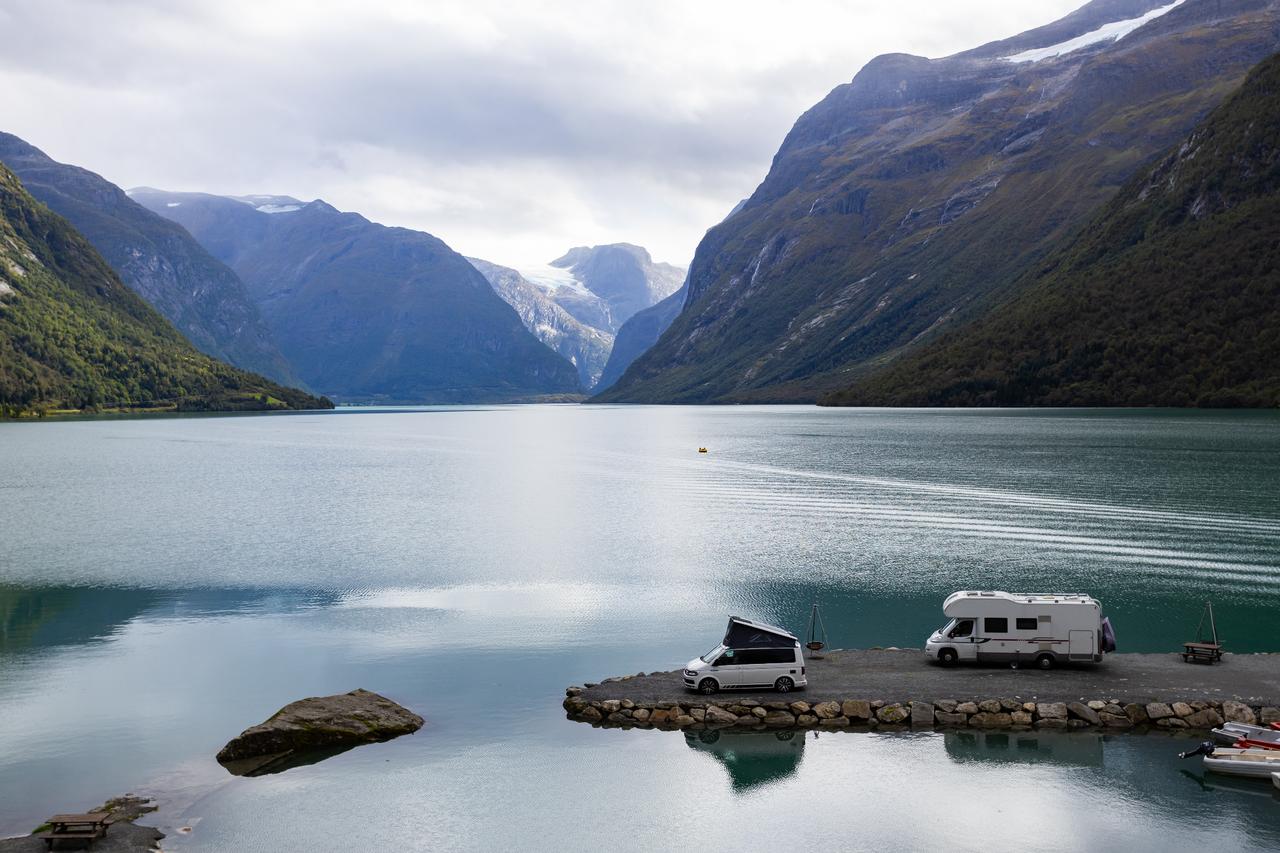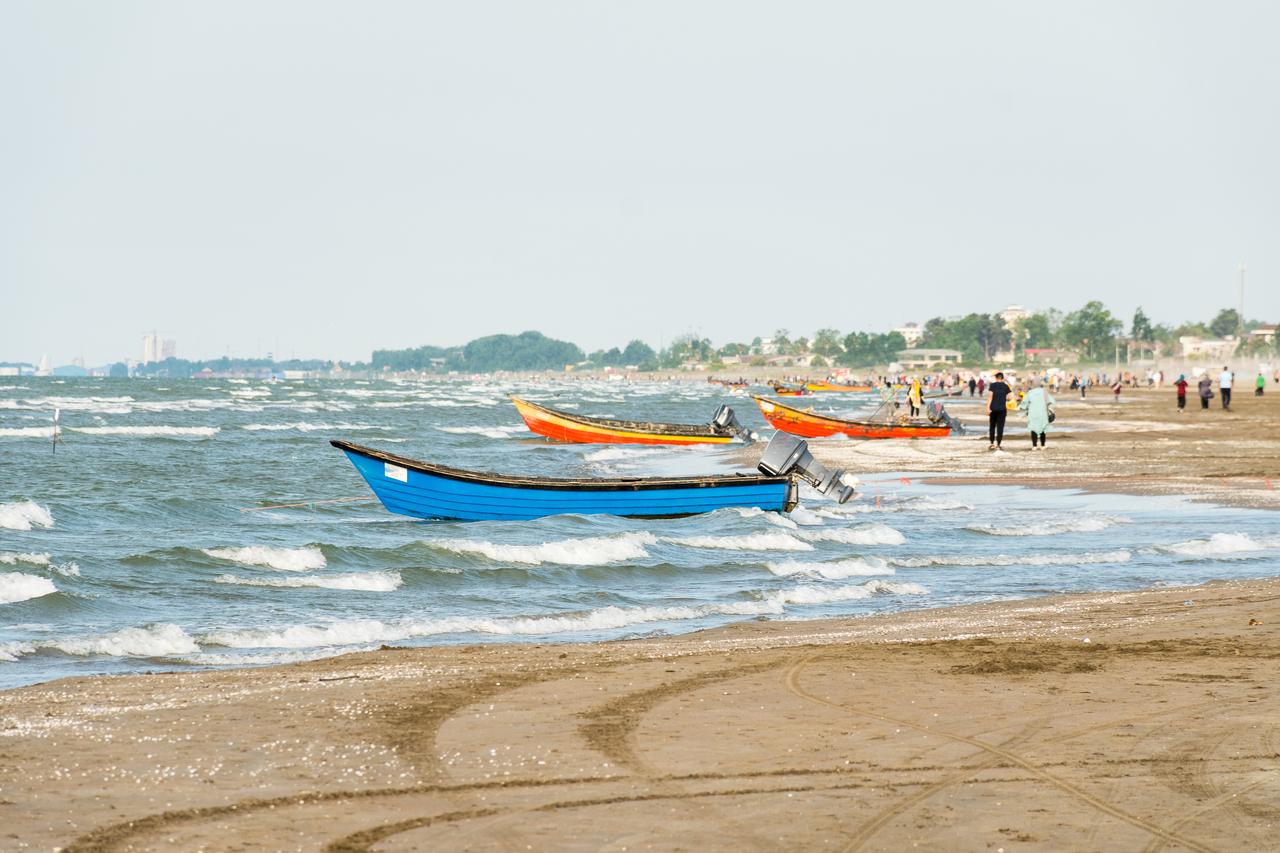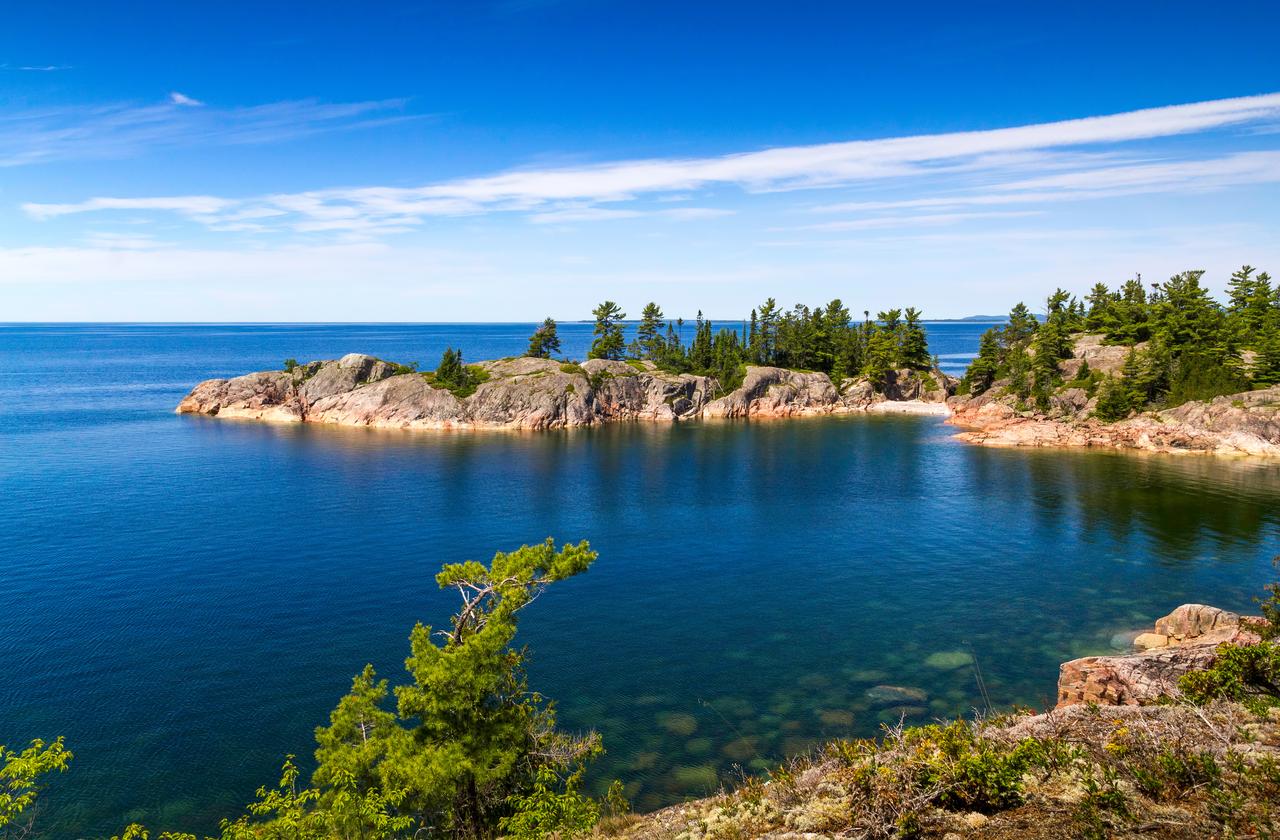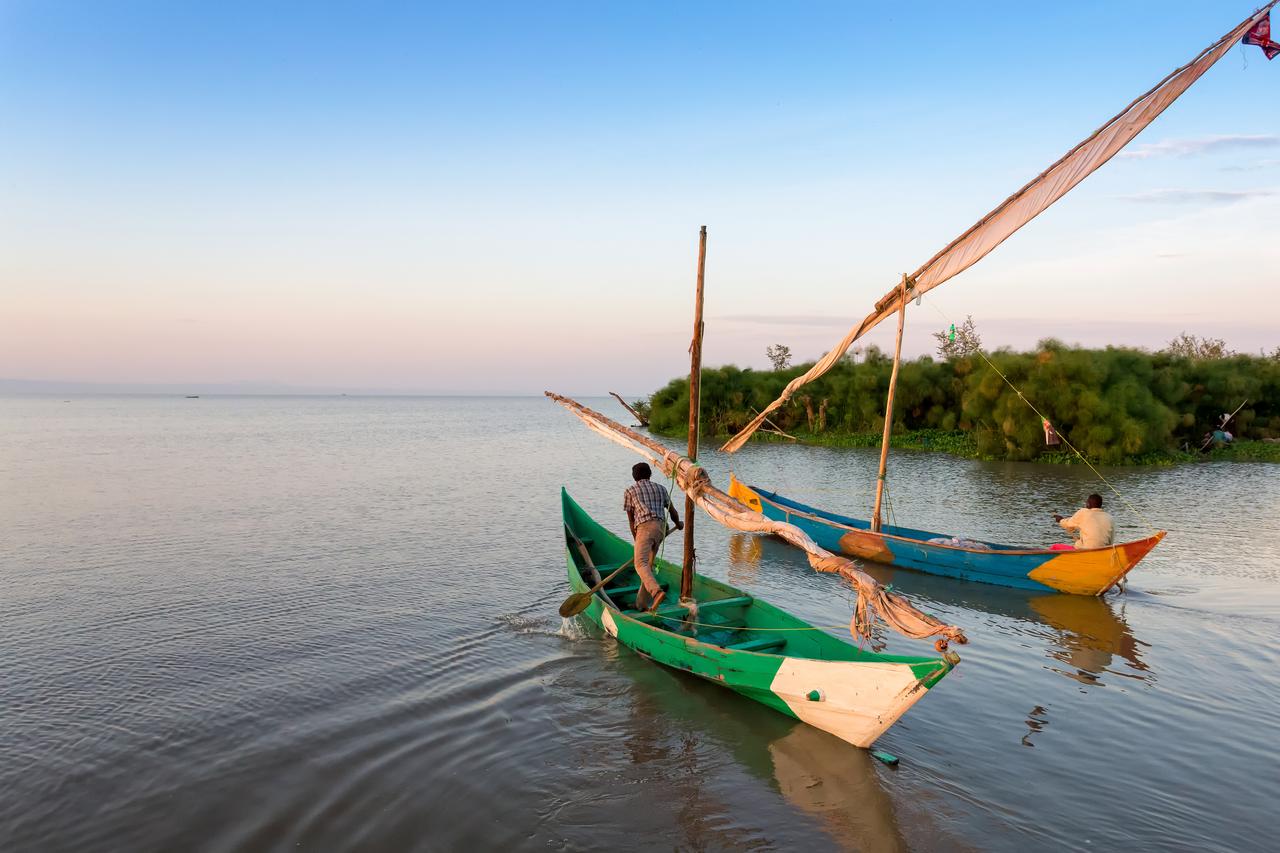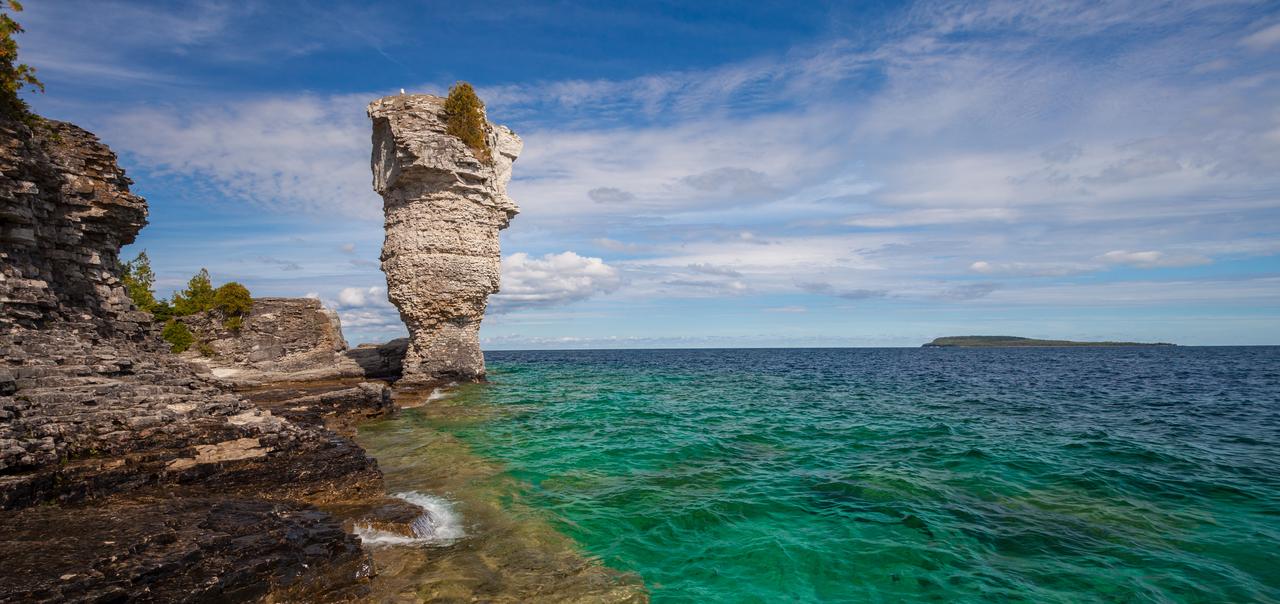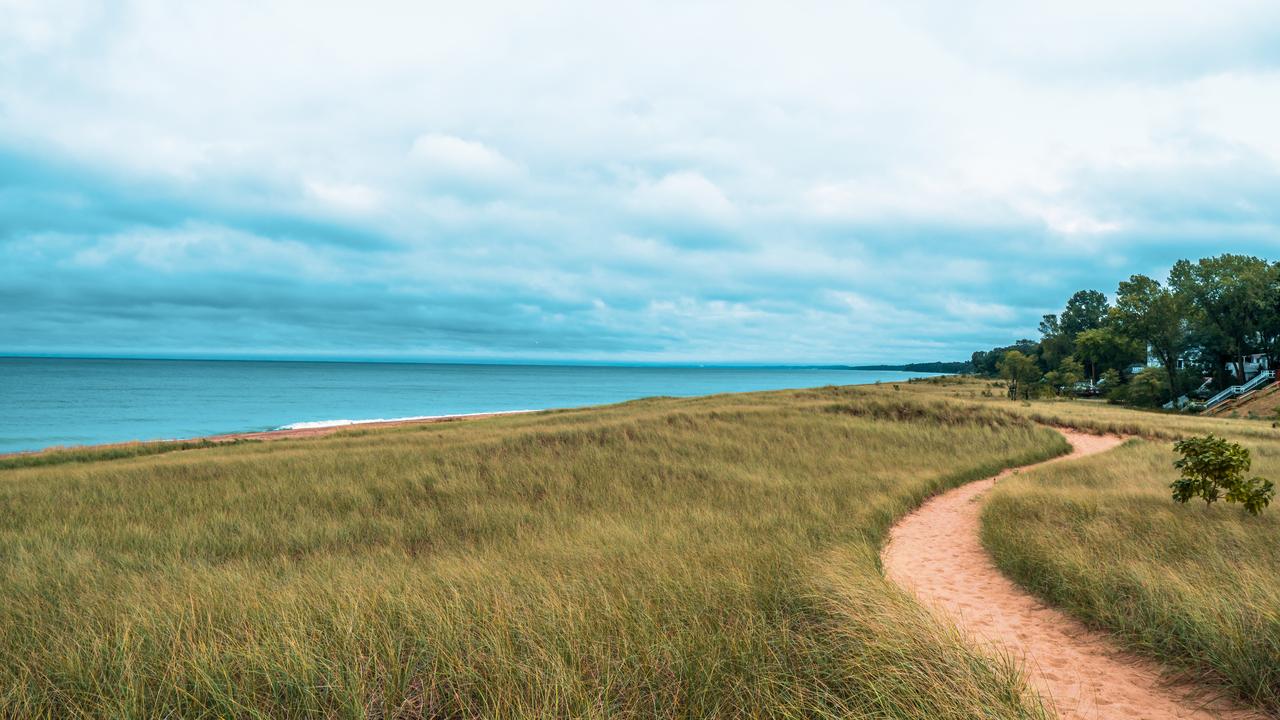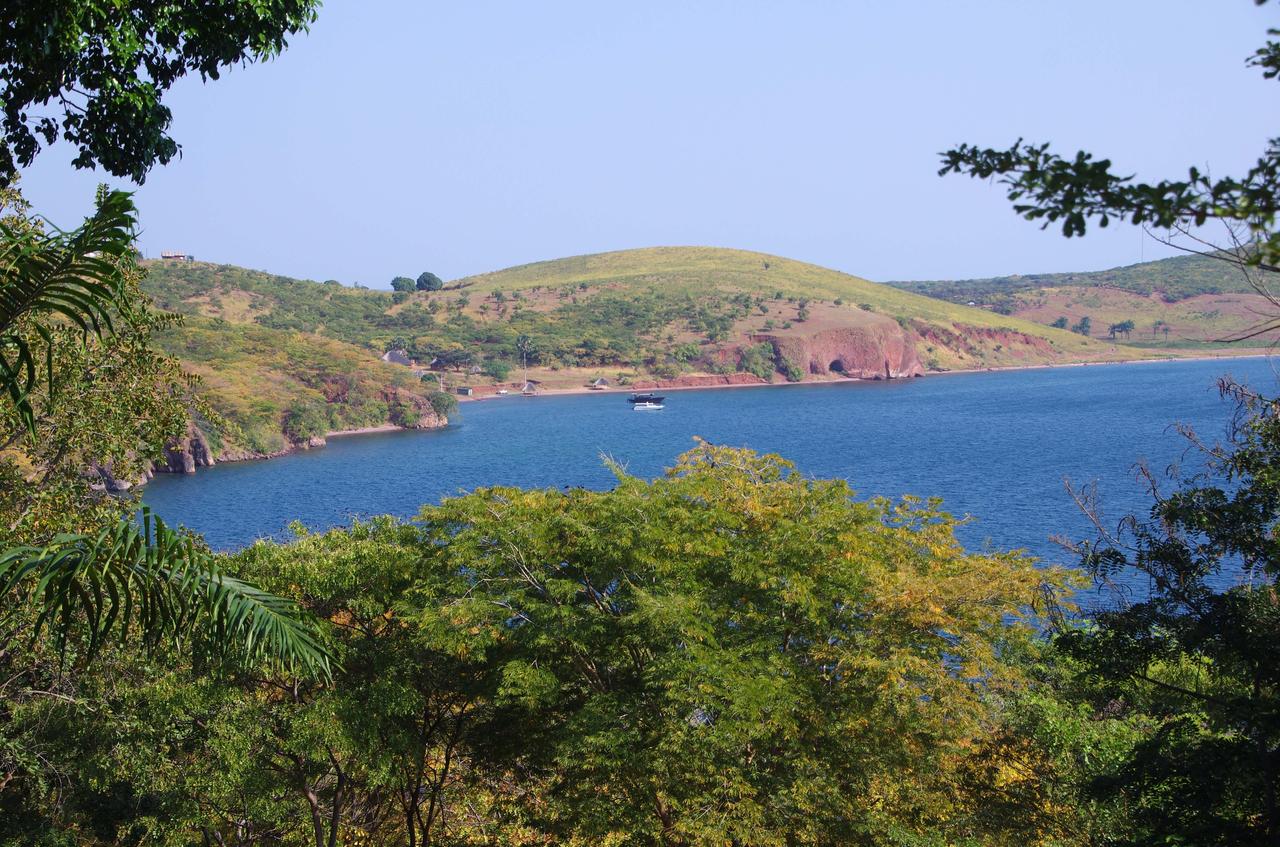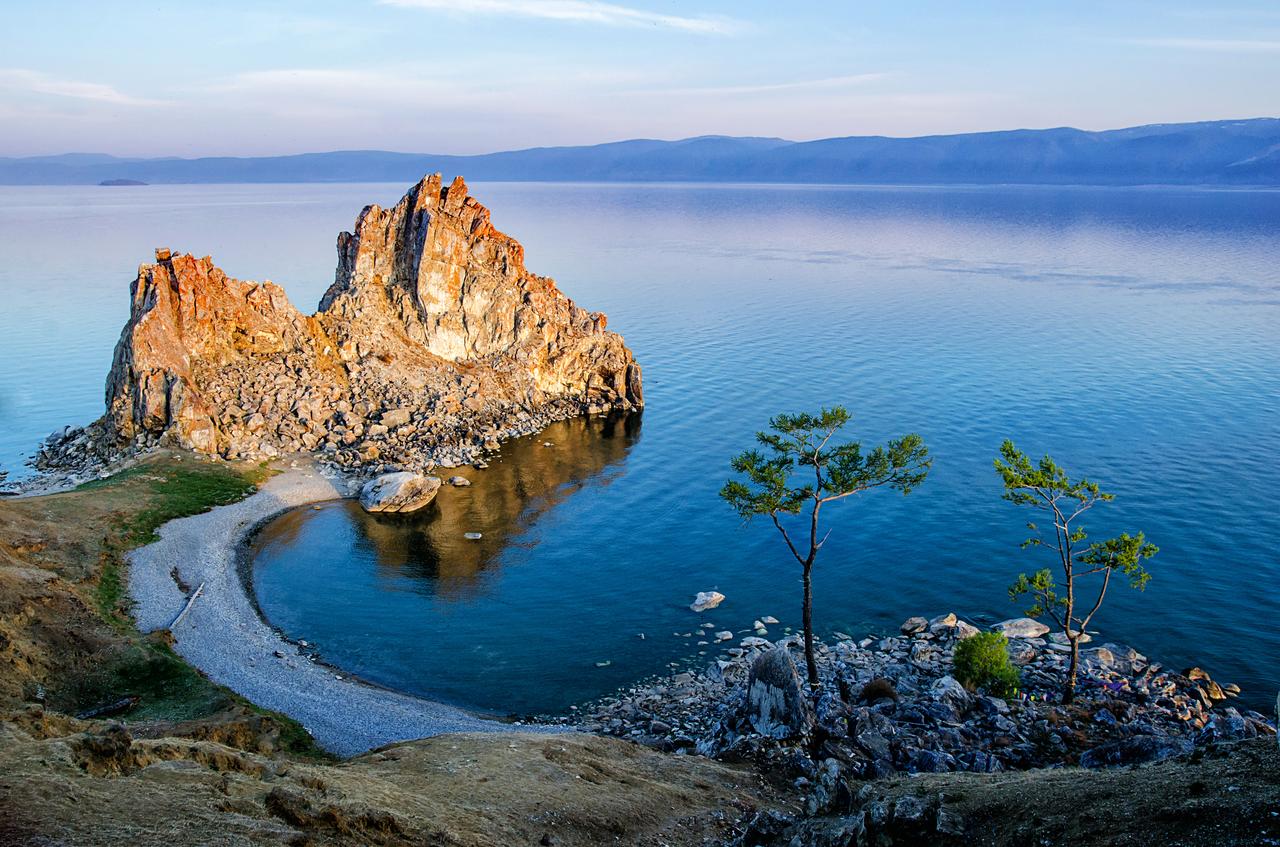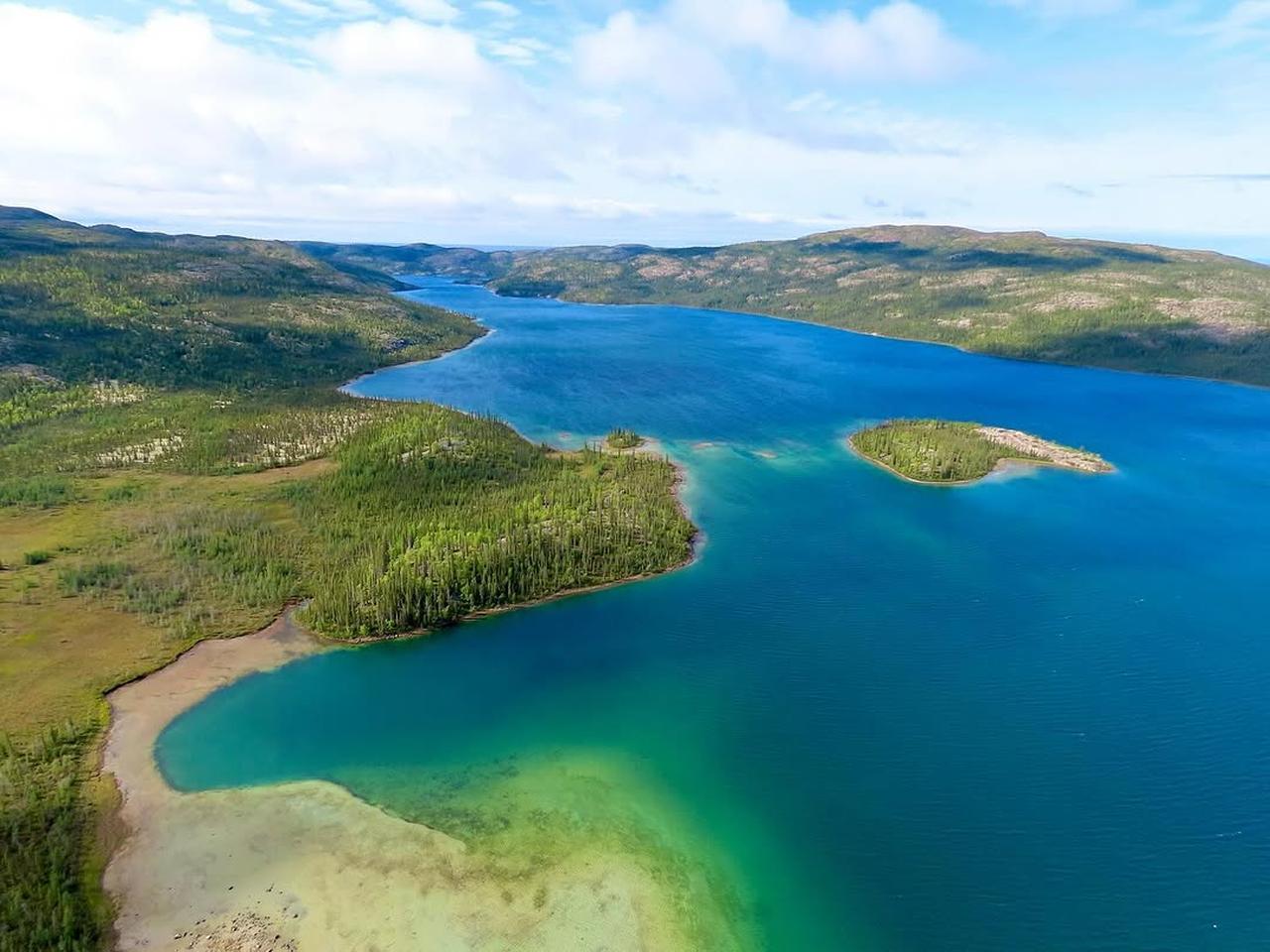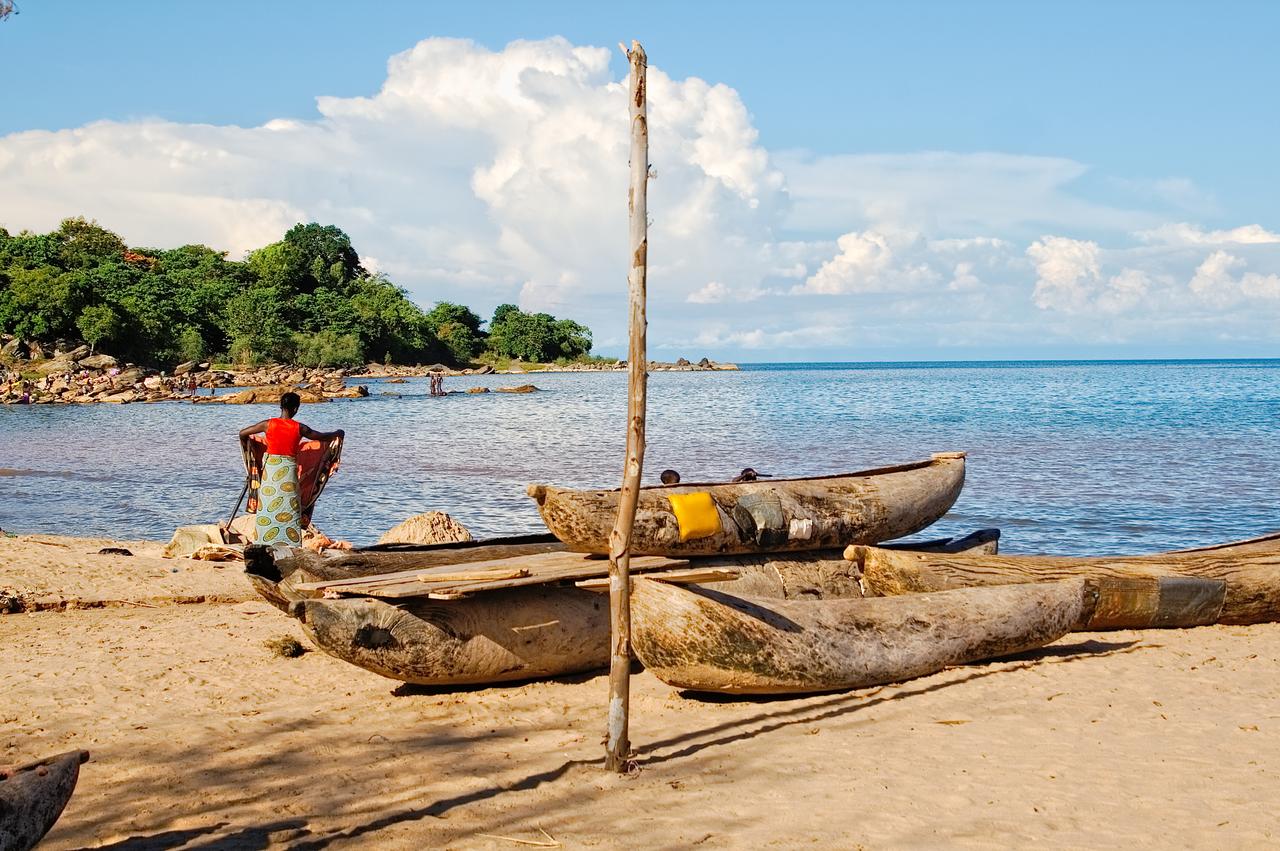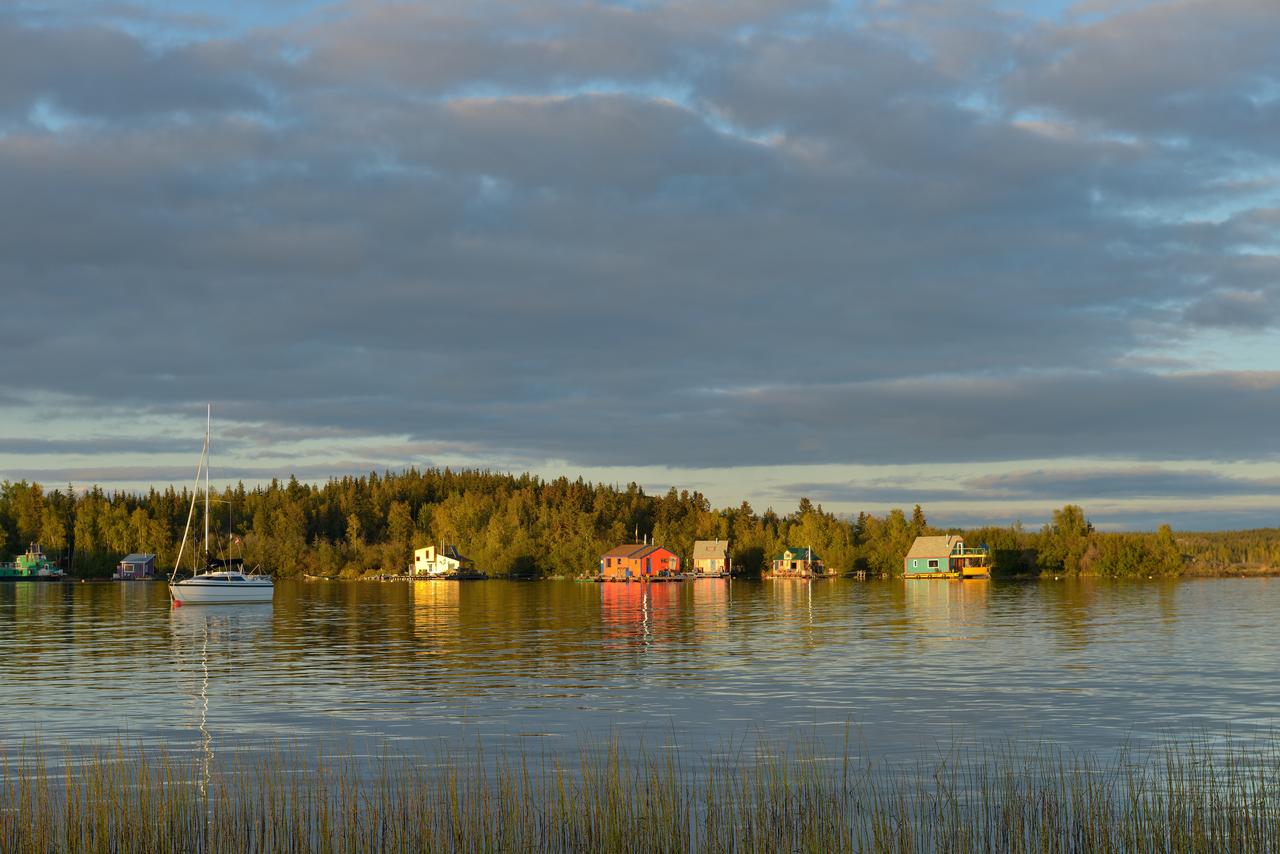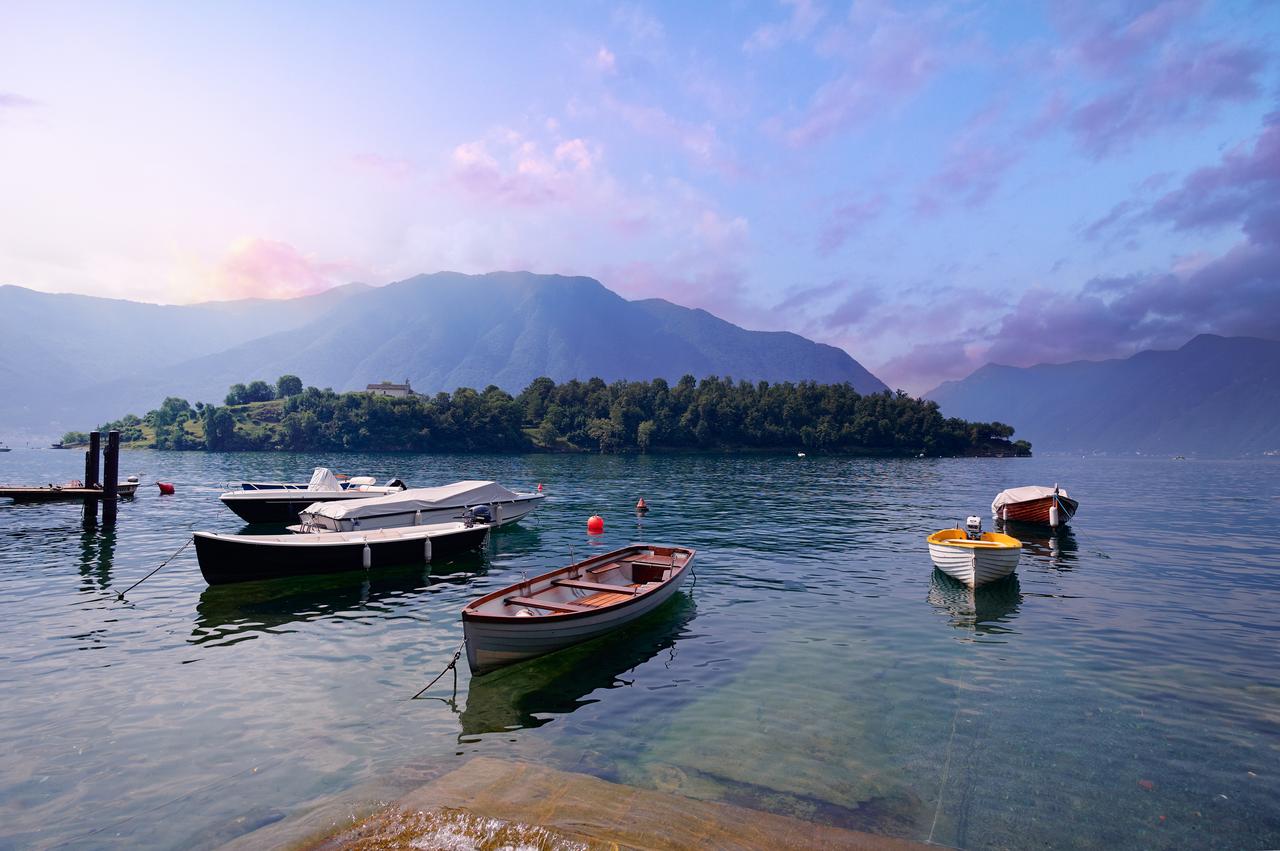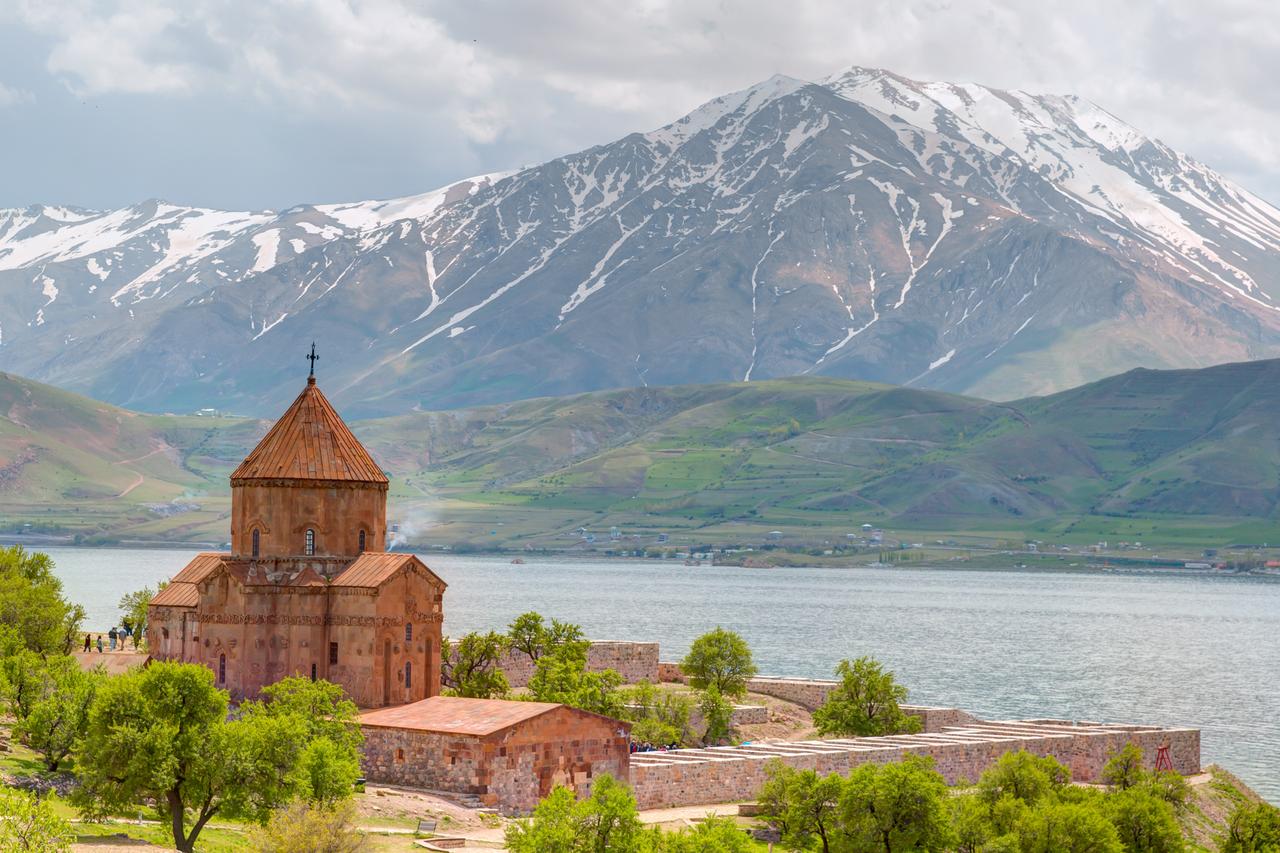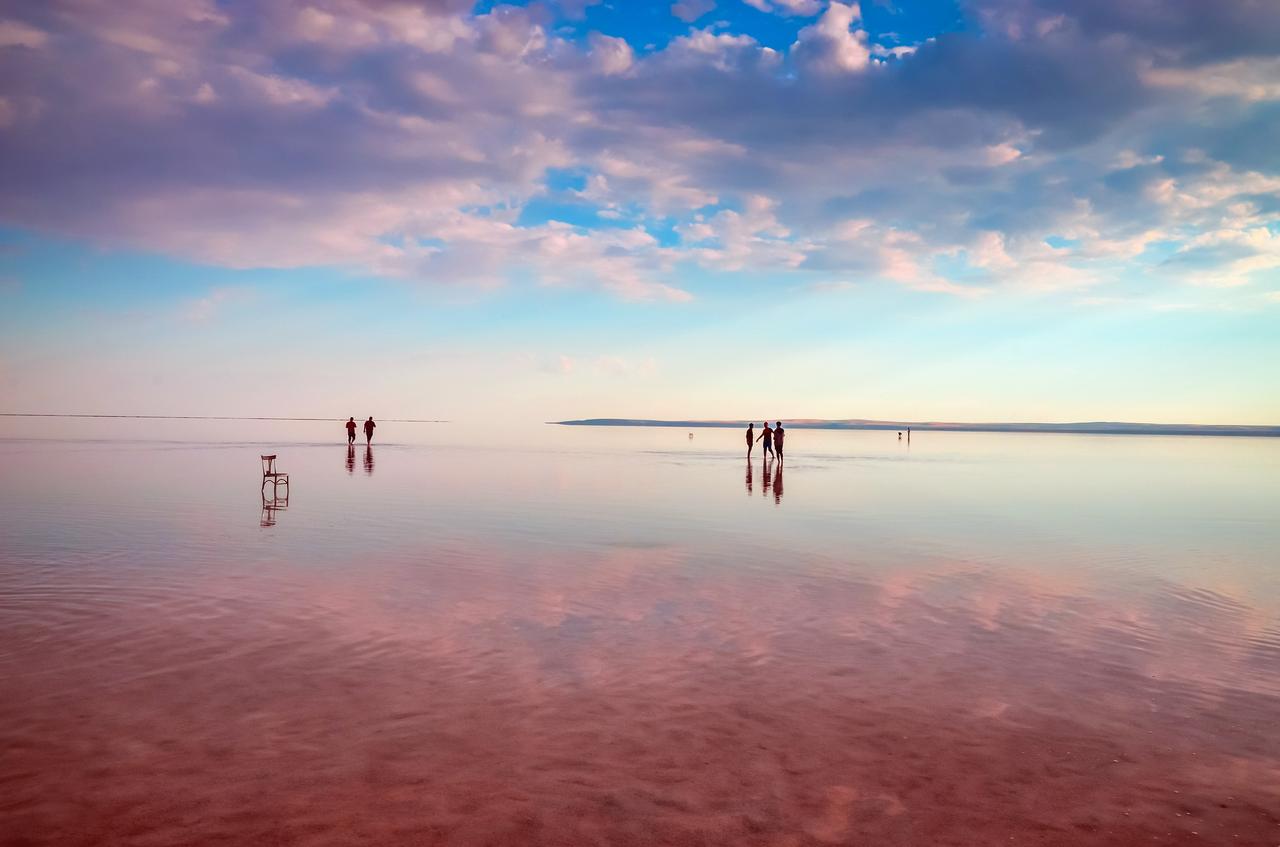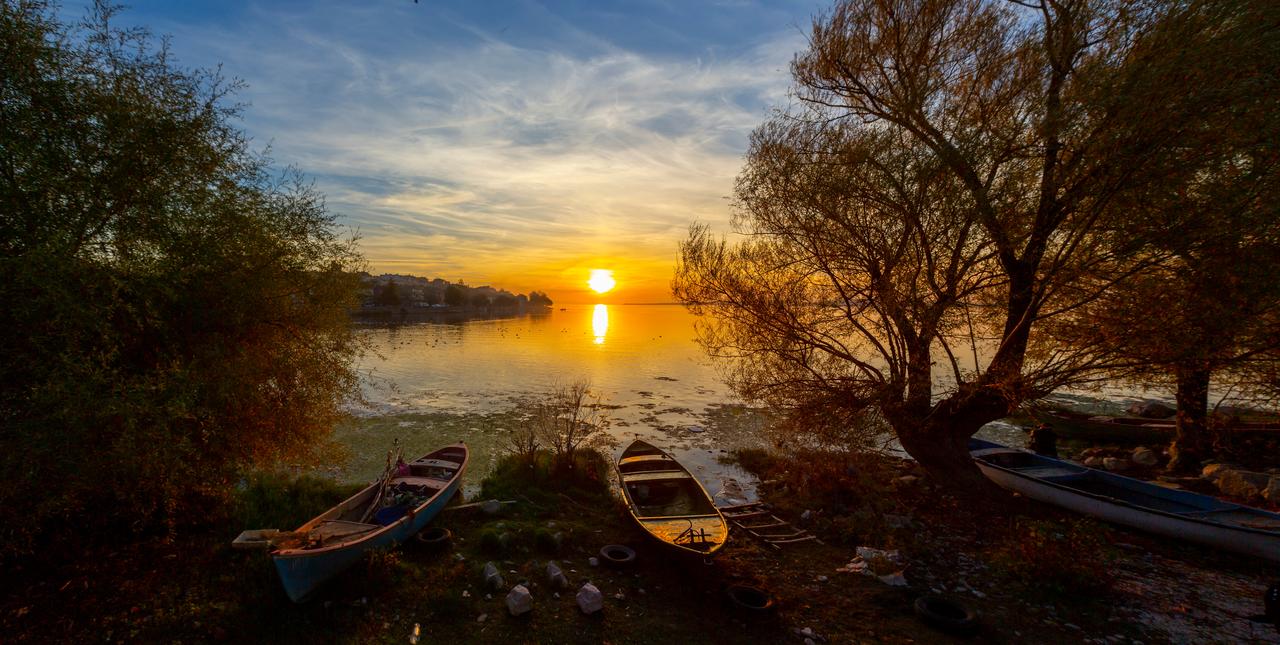The world's largest lakes are no longer the stable reservoirs they once were. In recent years, satellite images have revealed widespread shrinkage from North America to Central Asia.
While countries with expansive freshwater reserves face ecological pressure, Türkiye’s inland lakes, including Lake Van, Lake Tuz, and Lake Beysehir, are undergoing the same decline.
So, let’s look at the largest lakes on Earth and explore how the climate crisis is reshaping their future and Türkiye’s vulnerable lake systems.
Traditional Iranian colorful wooden motor boats on Caspian Sea shore in Bandar-e Anzali, Gilan, Iran, accessed July 17, 2025. (Adobe Stock Photo)
The top 10 largest lakes in the world by surface area in 2025
1. Caspian Sea—143,224 square miles (371,000 sq km)
Though commonly called a sea, the Caspian is technically the largest lake in the world by surface area. This vast, landlocked saltwater body borders five countries: Russia, Kazakhstan, Turkmenistan, Iran, and Azerbaijan.
- It is home to unique species such as the endangered Caspian seal and supports a significant caviar industry thanks to its sturgeon population.
- The region is also a major hub for oil and natural gas extraction, making the lake geopolitically and economically vital.
- Despite its size, the Caspian has no natural outlet, which means its water balance is entirely dependent on river inflow and evaporation.
Rock peninsula on the north shore of Lake Superior, Duluth, Minnesota, United States, accessed July 17, 2025. (Adobe Stock Photo)
2. Lake Superior—31,709 square miles (82,103 sq km)
Lake Superior, the largest of North America’s Great Lakes, straddles the border between the United States and Canada. It touches the U.S. states of Minnesota, Wisconsin, and Michigan, and the Canadian province of Ontario.
- Known for its cold, clear waters and rugged shoreline, the lake contains more water than all the other Great Lakes combined and accounts for 10 percent of the world’s surface freshwater.
- Its depth, clarity, and isolation help sustain a wide range of fish species, including lake trout and whitefish.
- Numerous shipwrecks lie at the bottom of the lake, adding to its historical and cultural significance.
Fishermen go to work in Lake Victoria, known as Africa's largest lake by area, the world's largest tropical lake, and the world's second-largest fresh water lake, accessed July 17, 2025. (Adobe Stock Photo)
3. Lake Victoria—26,824 square miles (69,484 sq km)
Africa’s largest lake by surface area, Lake Victoria, lies between Tanzania, Uganda, and Kenya.
- It is the primary source of the White Nile and plays a crucial role in supporting agriculture, fishing, and transportation for more than 40 million people.
- The lake is relatively shallow compared to others on this list but incredibly biodiverse, home to hundreds of endemic fish species, particularly cichlids.
- Despite its natural wealth, the lake’s ecosystem faces intense pressure from human settlement, overfishing, and pollution.
The view of Lake Huron from Flowerpot Island, Canada, accessed July 17, 2025. (Adobe Stock Photo)
4. Lake Huron—23,006 square miles (59,590 sq km)
Lake Huron is the second-largest of the Great Lakes and shares a border with Michigan (USA) and Ontario (Canada).
- It is notable for housing Manitoulin Island, the largest island in any freshwater lake in the world.
- The lake contains thousands of other islands and is heavily forested along much of its Canadian shoreline.
- Rich in wetlands and coastal habitats, Lake Huron supports commercial and recreational fisheries, and provides drinking water to surrounding communities.
Beautiful landscape of Lake Michigan dunes and beach in New Buffalo, Michigan, accessed July 17, 2025. (Adobe Stock Photo)
5. Lake Michigan—22,301 square miles (57,753 sq km)
Lake Michigan is the only Great Lake located entirely within the United States, touching the states of Illinois, Indiana, Michigan, and Wisconsin.
- It is a major transportation corridor for cargo ships, especially through the Chicago port.
- The lake supports major urban centers, including Milwaukee and Chicago, and is a key source of drinking water, recreation, and commercial fishing.
- Its eastern and northern shores are characterized by sand dunes and forests, while the southern part is more urbanized and industrial.
Tanganyika Lake, also known as the world's second-largest freshwater lake by volume and the second deepest, Tanzania, accessed July 17, 2025. (Adobe Stock Photo)
6. Lake Tanganyika—12,703 square miles (32,900 sq km)
Stretching across Burundi, Tanzania, Zambia, and the Democratic Republic of the Congo, Lake Tanganyika is not only among the largest lakes by surface area but also the world’s second-deepest and longest freshwater lake.
- It holds about 17 percent of the planet’s surface freshwater by volume.
- Lake Tanganyika is a vital source of protein for local communities, which rely heavily on its fisheries.
- The lake hosts over 350 fish species, many of them endemic.
- Its steep escarpments and deep basins give it an ocean-like character, and its waters drain into the Atlantic Ocean via the Congo River system.
Summer sunset over Shamanka (Shaman Rock) on Olkhon Island in Lake Baikal, Russia, accessed July 17, 2025. (Adobe Stock Photo)
7. Lake Baikal—12,250 square miles (31,722 sq km)
Located in southeastern Siberia, Lake Baikal is the deepest and oldest freshwater lake in the world.
- It reaches depths of over 5,300 feet (1,620 meters) and is estimated to be over 25 million years old. It contains about 20% of all unfrozen freshwater on Earth.
- The lake is recognized as a UNESCO World Heritage Site and hosts a unique ecosystem that includes the Baikal seal, the only freshwater seal species.
- Surrounded by mountains and forests, the lake is a revered natural monument in Russian culture and spirituality.
An aerial view of the Great Bear Lake in the Northwest Territories, Canada, September 5, 2024. (Photo via Instagram / @spectacularnwt)
8. Great Bear Lake—12,094 square miles (31,328 sq km)
Canada’s largest entirely freshwater lake, Great Bear Lake, is located in the Northwest Territories, well within the Arctic Circle.
- It remains largely pristine, with limited development and minimal industrial activity.
- The lake is important to the Sahtu Dene people and features prominently in their traditions.
- Its cold, nutrient-rich waters support a variety of fish species, including Arctic grayling and lake trout.
- Due to its remote location and limited access, the lake is one of the few remaining large freshwater systems with relatively intact ecological processes.
Dugout canoes at the shore of Lake Malawi, the fourth largest freshwater lake in the world by volume, Tanzania, accessed July 17, 2025. (Adobe Stock Photo)
9. Lake Malawi—11,426 square miles (29,600 sq km)
Known locally as Lake Nyasa in Tanzania and Lago Niassa in Mozambique, Lake Malawi spans three countries in southeastern Africa.
- It is one of the world’s most biologically diverse lakes, with more than 800 species of cichlid fish, many of which are found nowhere else.
- The lake plays a central role in local economies through fishing, transport, and tourism.
- It also provides critical ecosystem services such as climate regulation and freshwater supply.
- The lake’s clear waters and rocky habitats have made it a major destination for ecotourism and scientific study.
Autumn sunset at a fishing village on Great Slave Lake in northern Canada, accessed July 17, 2025. (Adobe Stock Photo)
10. Great Slave Lake—11,030 square miles (28,568 sq km)
This Canadian lake, also located in the Northwest Territories, is the deepest lake in North America, plunging to depths of more than 2,000 feet (610 meters).
Great Slave Lake is surrounded by boreal forests and supports communities such as Yellowknife, the capital of the territory.
- It is a hub for fishing, transportation, and traditional Indigenous practices.
- In winter, it becomes a frozen roadway, connecting otherwise inaccessible areas.
- In summer, its vast surface area contributes to regional weather patterns and water cycles.
While the largest lakes in the world span continents and support entire ecosystems, their decline reflects a broader environmental shift. The same pattern has emerged in Türkiye, where inland lakes experience similar pressures.
Lake Van, Lake Tuz, and Lake Beysehir each demonstrate how water loss, chemical imbalance, and habitat collapse now affect regional landscapes just as severely.
Beautiful scene of boats on blue Lake Como, surrounded by green hills, Italy, accessed July 17, 2025. (Adobe Stock Photo)
How climate change is shrinking major lakes around the world
According to a 2023 satellite analysis published in Science, more than 50% of large lakes globally lost significant water between 1992 and 2020.
While some shrinkage is linked to human overuse, climate change remains the primary driver.
Key contributing factors include:
- Higher temperatures cause evaporation
- Decreased snowfall and glacial runoff
- Disruption of rainfall patterns
- Excessive water extraction for agriculture
The Aral Sea, once the world’s fourth-largest lake, has nearly vanished. Lake Urmia in Iran has lost over 90 percent of its area since the 1970s. Lake Chad has shrunk by more than 90% since 1963, leading to regional conflict and mass migration.
In 2024, an analysis by scientists from NOAA’s National Centers for Environmental Information (NCEI) found that it had been the planet’s warmest year on record. This implies that the well-being of large lakes is expected to deteriorate.
The 10th-century Armenian Church of the Holy Cross stands on Akdamar Island in Lake Van, with Mount Artos visible in the background, Van, Türkiye, accessed Jul. 1, 2025. (Adobe Stock Photo)
Lake Van, the world’s largest alkaline lake
Lake Van lies in eastern Türkiye and holds the title of the world’s largest alkaline lake.
At a glance
- Size: 1,434 square miles (3,713 square kilometers)
- Width: 74 miles (119 kilometers) at its widest point
- Volume: 607 cubic kilometers
- Type: Alkaline soda lake
- Notable species: Pearl mullet, a freshwater fish uniquely adapted to Van’s high salinity
Ecological and cultural significance
- Lake Van’s high concentrations of sodium carbonate and other salts make its waters inhospitable to most aquatic life, but the endemic pearl mullet thrives under these extreme conditions
- The lake attracts both researchers and tourists for its unusual chemistry, scenic landscapes, and historical heritage
- The 10th-century Akdamar Church, located on Akdamar Island, is one of the region’s most visited landmarks, blending natural and cultural tourism
Climate and water challenges
- Experts have warned that rising temperatures and declining rainfall are accelerating evaporation from the lake
- As water levels fall, salinity increases, endangering the delicate ecological balance and reducing habitats for the pearl mullet
- The lake’s declining shoreline has also raised concerns for local tourism and biodiversity conservation in the surrounding region
Lake Tuz (Salt Lake) is one of the largest salt lakes in the world, Konya, Türkiye, accessed July 17, 2025. (Adobe Stock Photo)
Lake Tuz, Türkiye’s shrinking salt lake
Lake Tuz (meaning “Salt Lake”) is located in Central Anatolia and is one of the world’s largest hypersaline lakes.
At a glance
- Size: 643 square miles (1,665 square kilometers)
- Location: 65 miles (105 kilometers) northeast of Konya, and near the cities of Ankara and Aksaray
- Type: Hypersaline lake with a thick salt crust
- Tourism: Popular site for seasonal tourism and photography
Economic and ecological role
- Lake Tuz has long served as a key site for salt extraction, supporting the regional salt industry
- It also provides seasonal habitat for flamingo breeding, drawing birdwatchers and researchers
Environmental collapse
- In October 2021, the lake completely dried up due to prolonged drought, extreme heat, and excessive agricultural irrigation in the surrounding Konya Plain
- That year, tens of thousands of flamingo chicks died after the breeding grounds lost surface water before the chicks could fledge
- The Ministry of Agriculture acknowledged that unregulated groundwater use had accelerated the collapse, leading to calls for stricter water management in the region
Fishing boats in the Beysehir lake during a sunset, Konya, Türkiye, accessed July 17, 2025. (Adobe Stock Photo)
Lake Beysehir, Türkiye’s largest freshwater lake
Lake Beysehir stretches across the provinces of Konya and Isparta in southwestern Türkiye and is the largest freshwater lake in the country.
At a glance
- Size: 250 square miles (650 square kilometers)
- Length: 28 miles (45 kilometers)
- Width: 12 miles (20 kilometers)
- Type: Freshwater lake
- Historical name: Known in antiquity as Carallis or Karalis (Ancient Greek: Καραλλις)
- Town: Named after the adjacent town of Beysehir
Economic and ecological role
- The lake is critical for irrigating agricultural lands in a semi-arid region with limited summer rainfall
- It supports fishing livelihoods and is home to various migratory bird species
- Lake Beysehir is also a destination for recreational tourism, offering boat tours and lakeside amenities during the warmer months
Environmental stress
- In recent years, water depth in some areas has dropped by as much as 50%, primarily due to insufficient rainfall and heavy irrigation use
- Farmers have been subjected to seasonal water restrictions, limiting agricultural output and intensifying concerns about water management
- Locals have reported visible retreat of the shoreline, and conservation advocates warn that the lake’s long-term future remains uncertain without improved water use regulation
Inland lakes across Türkiye show similar signs of stress. Meteorological data confirm that 2021 and 2022 were among the driest years in recent history, and evaporation rates have risen sharply.
At the same time, inefficient irrigation and lack of wetland protections are accelerating decline.
Lake Van, Lake Tuz and Lake Beysehir now stand as case studies in what happens when climate pressures and unsustainable practices intersect.
July 20, 2025 10:03 AM GMT+03:00
